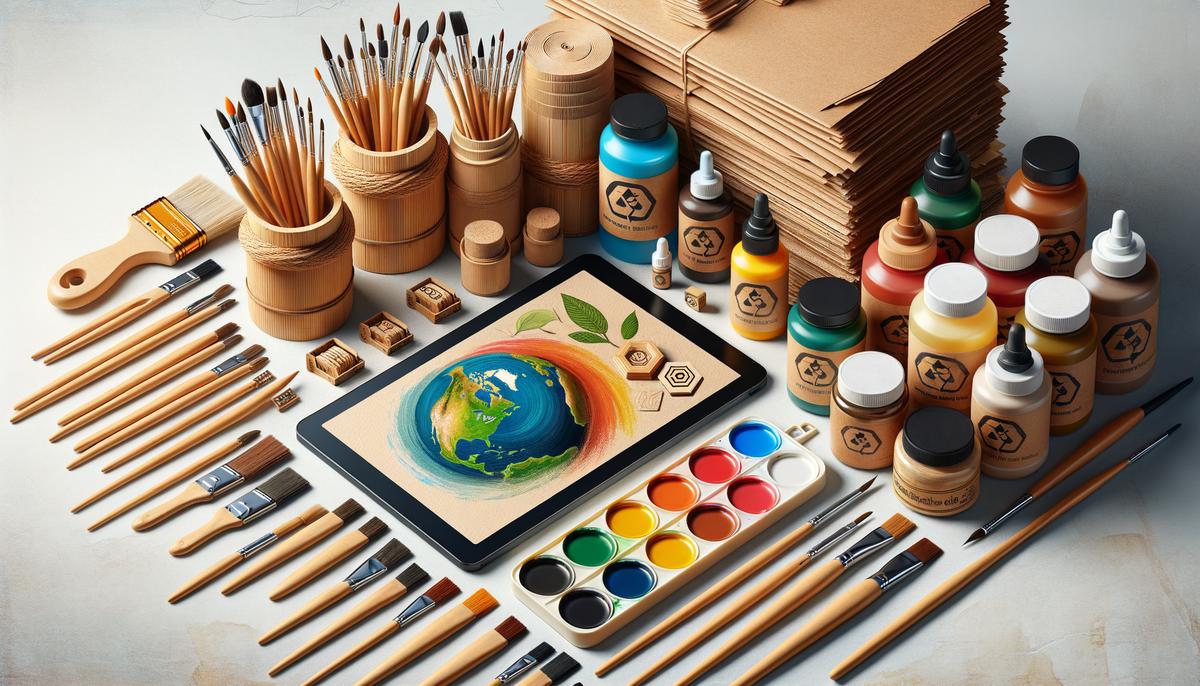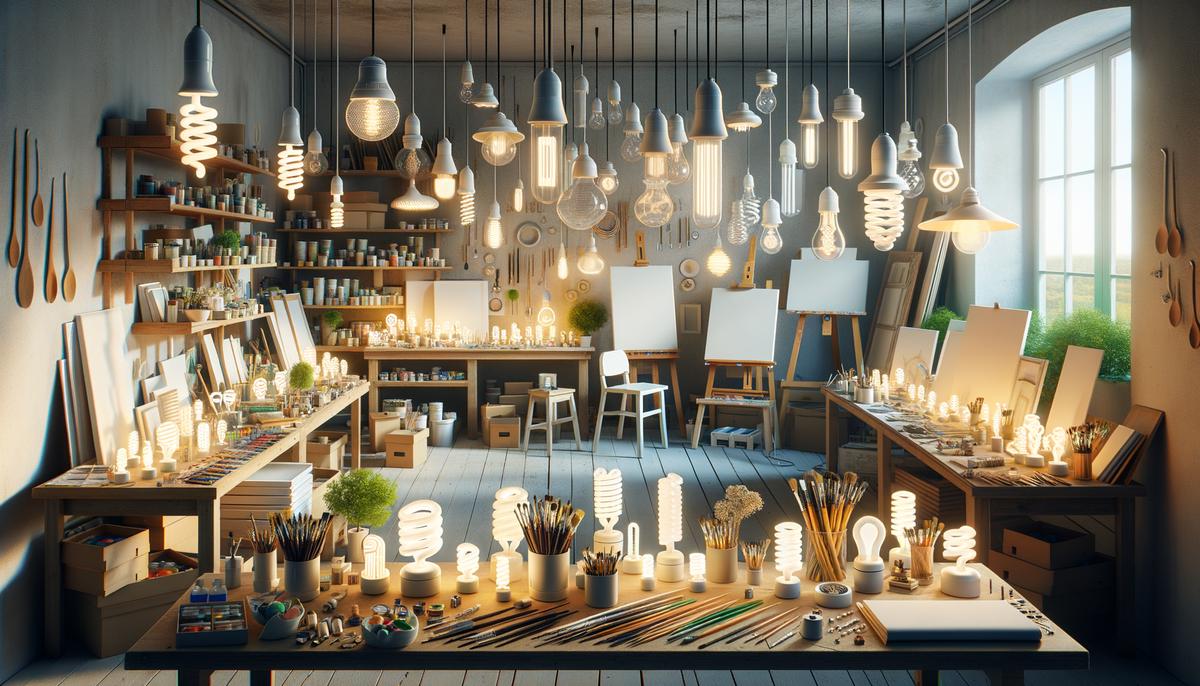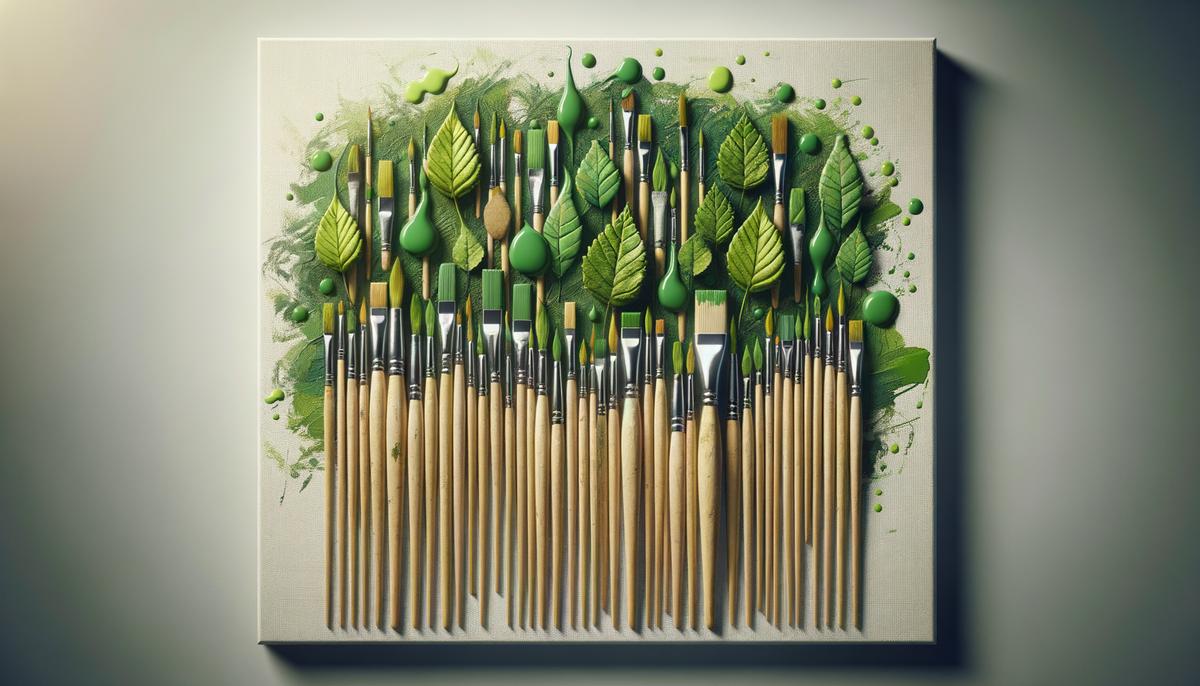Our world is evolving, and with it, the ways we create art are transforming too. Emphasizing the importance of sustainability in art materials not only furthers our environmental goals but also opens new avenues for creativity and innovation. This article ventures into the realm of eco-friendly art supplies, shedding light on choices that harmonize our artistic expressions with our dedication to preserving the planet. Through exploring these sustainable options, artists can discover tools and techniques that support both their craft and the environment.
Sustainable Art Materials
Sustainable Art Materials: A Guide to Eco-Friendly Creation
In the world of art, where creativity knows no bounds, the materials artists choose can have a significant impact on our environment. As we strive for more sustainable lifestyles, selecting eco-friendly art supplies becomes a crucial part of reducing our carbon footprint. This article explores the most sustainable art materials available today, presenting options that not only benefit artists but also our planet.
Understanding Sustainable Art Materials
Sustainability in art means using materials that are either sourced from renewable resources, produced with minimal environmental impact, or can be reused, recycled, or biodegraded after their useful life. Sustainable art supplies aim to reduce waste, avoid toxic emissions, and minimize the depletion of non-renewable resources.
Bamboo Products
Bamboo stands out as an exceptionally sustainable material. It grows rapidly, sometimes more than three feet in a day, making it a highly renewable resource. Bamboo can be transformed into various art materials including paper, panels for painting, and tools like brushes. Its versatility and swift regeneration make bamboo an excellent choice for eco-conscious artists.
Recycled and Upcycled Materials
Recycled products are created from used objects and waste materials. Paper, for instance, can be made from recycled materials, offering a lower-impact alternative to virgin paper. Upcycling, on the other hand, involves transforming waste materials or unwanted products into new materials or products of higher quality. Artists can use upcycled materials such as plastic, glass, and metal to create sculptures, installations, and other pieces of art.
Natural Paints and Pigments
Traditional paints often contain chemicals and metals that can be harmful to the environment. Natural paints, made from plant-based sources, minerals, and earth pigments, provide a sustainable alternative. These paints are biodegradable and less toxic, making them safer for the artist and the planet. Moreover, they offer vibrant colors that do not fade easily, ensuring the longevity of the artwork.
Biodegradable Glues and Adhesives
Regular glues and adhesives are derived from petroleum, a non-renewable resource, and can release harmful chemicals. Biodegradable glues are made from natural ingredients like starch, cellulose, or natural rubber, making them a more sustainable choice. These adhesives are effective for various artistic applications and decompose naturally without leaving toxic residues.
Digital Art Tools
The advancement of technology has introduced digital art as a form of sustainable creativity. Digital tools do not require physical materials, which means there’s no waste from unused paint, paper, or canvases. Though the energy consumption of digital devices is a factor, using renewable energy sources can mitigate these impacts, making digital art a low-footprint alternative.
Choosing Sustainable Art Materials
The transition to sustainable art materials requires mindfulness about the sources, production processes, and lifecycle of the products. Artists seeking sustainable options should:
- Look for certifications and labels indicating eco-friendly products.
- Consider the full lifecycle of materials, from production to disposal.
- Explore local sources to reduce transportation emissions.
- Engage with suppliers committed to sustainability.
Embracing sustainable art materials not only contributes to environmental conservation but also inspires creativity and innovation. By making informed choices, artists can lead by example, showcasing how art can flourish while respecting and preserving our planet.

Energy-Efficient Art Studios
Energy Efficient Lighting Solutions
One of the simplest yet significant changes artists can make in their studios is upgrading to energy-efficient lighting. Traditional incandescent bulbs consume an excessive amount of electricity and generate unnecessary heat, contributing to higher energy bills and a less comfortable working environment. LED (Light Emitting Diode) bulbs or CFL (Compact Fluorescent Lamps) are superior alternatives. LEDs, for instance, use up to 75% less energy and last 25 times longer than incandescent lighting. This switch not only reduces the studio’s carbon footprint but also cuts down on the frequency of bulb replacements, saving both time and resources.
Smart Thermostats for Climate Control
Maintaining an optimal studio temperature is crucial for both the artist’s comfort and the preservation of art materials. However, heating and cooling can account for a substantial part of a studio’s energy consumption. Installing a smart thermostat offers a solution by automating temperature control, ensuring the space is only heated or cooled when necessary. These devices learn the studio’s usage patterns and adjust the climate accordingly, eliminating wasteful energy use. Additionally, artists can control smart thermostats remotely via smartphones, enabling them to adjust settings even when they’re away, ensuring the studio is always at an ideal temperature upon return.
Solar Panels to Harness Renewable Energy
For artists aiming to achieve a significant reduction in their studio’s energy dependence, investing in solar panels is a transformative step. By harnessing the power of the sun, solar panels produce clean, renewable energy that can operate the entire studio, including lights, heating, cooling, and electronic devices. While the initial installation can be costly, the long-term savings on electricity bills and the positive environmental impact make solar panels a wise investment. Furthermore, many regions offer incentives or rebates for solar panel installations, making this green energy source more accessible.
Energy-Efficient Windows and Insulation
A studio’s design and construction play a critical role in its energy efficiency. Poorly insulated spaces and single-pane windows can lead to significant heat loss in the winter and excessive heat gain in the summer, forcing heating and cooling systems to work harder. Upgrading to double-glazed windows and improving wall and roof insulation can markedly reduce this issue. These changes help maintain a more consistent studio temperature, relying less on artificial heating and cooling. Though renovations might seem daunting, the energy savings and enhanced comfort they bring will benefit the artist and the environment in the long run.
In conclusion, transforming an artist’s studio into an energy-efficient space involves a series of thoughtful changes and investments. From switching to LED lighting and smart thermostats to considering solar panels and improving insulation, each step contributes to a greener, more sustainable practice. These energy-saving measures not only aid in reducing the studio’s carbon footprint but also offer financial savings, creating a win-win scenario for artists and the planet alike.

Waste Reduction in Art Practices
Considering the environmental impact of art practices is crucial, especially in a world that is increasingly focused on sustainability. While the previous sections discussed sustainable art supplies and energy-saving measures, this part will delve further into waste reduction through responsible disposal, creative reuse of art materials, and the significance of community engagement in sustainability efforts.
Responsible Disposal of Art Waste
Not all art materials can be reused or recycled, underscoring the importance of proper disposal. Hazardous materials, such as certain paints, solvents, and mediums, require careful handling to avoid environmental contamination. Many local communities offer hazardous waste disposal services designed to prevent these materials from ending up in landfills where they could leach into the soil and groundwater. Artists are encouraged to familiarize themselves with these services and make responsible disposal a routine part of their art practice.
Creative Reuse of Art Materials
One artist’s trash can truly become another’s treasure. Scraps of fabric, unused paper, pieces of metal, and even old artworks can be repurposed into new creations. This method not only reduces waste but also encourages creative thinking and innovation. Artists can set aside materials that may not be immediately useful but could serve a purpose in future projects. Organizing materials for easy access can inspire artists to incorporate these items into their work, making recycling a central part of the creative process.
Engaging with the Art Community
Building a community around sustainable art practices can magnify individual efforts. Artists can host or participate in workshops focused on sustainability, share tips on waste reduction, and even organize material swaps. These activities encourage a collective approach to problem-solving regarding waste and sustainability. Additionally, raising awareness about the environmental impact of art practices can help foster a culture of accountability and change, both within and beyond the art community.
Utilizing Online Platforms and Social Media
In the digital age, online platforms and social media offer powerful tools for promoting sustainability in art practices. Artists can use these platforms to showcase their sustainable creations, share DIY recycling projects, and highlight the importance of environmentally friendly art practices. By doing so, they can inspire others to adopt similar practices, creating a ripple effect that extends far beyond their immediate circle.
Conclusion
Artists have a unique opportunity to lead by example in the movement toward a more sustainable future. By implementing responsible disposal methods, creatively reusing materials, and engaging with the art community, they can significantly reduce waste in their practices. Furthermore, leveraging online platforms can amplify their message, encouraging a broader shift towards environmental responsibility in the art world and beyond. As we continue to navigate the challenges of sustainability, adopting these practices can play a vital role in minimizing the environmental impact of art, making every stroke of the brush a step towards a greener planet.

As we examine the impact of our choices, both in the studio and beyond, embracing sustainable art practices emerges as a powerful avenue for positive change. Artists, with their unique influence and creative capacity, have the opportunity to lead the charge toward environmental stewardship. By selecting materials and practices that prioritize the well-being of our planet, every creative endeavor can become a testament to the possibility of a harmonious coexistence with our natural world. Thus, the path towards sustainability in art is not only an individual commitment but a collective step forward in fostering a greener, more vibrant future for all.

























